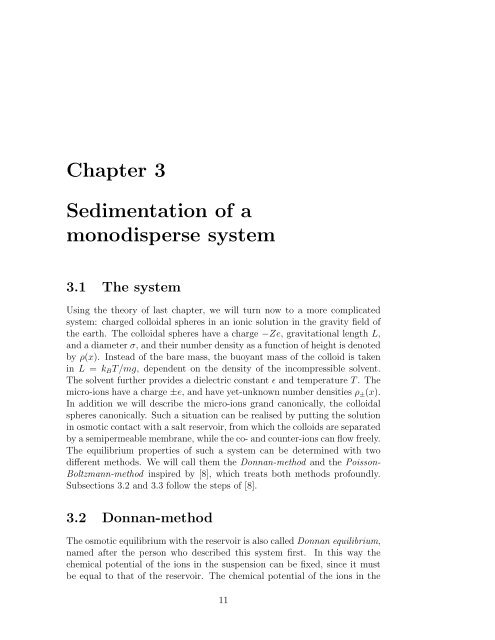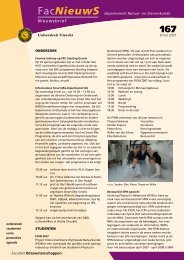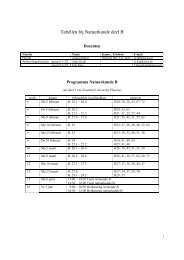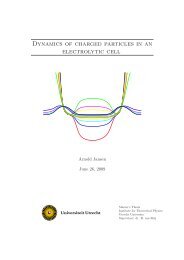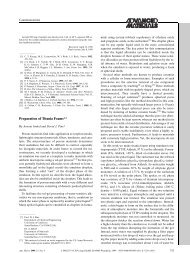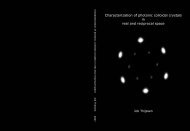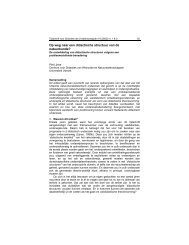Sedimentation Equilibrium of Mixtures of Charged Colloids
Sedimentation Equilibrium of Mixtures of Charged Colloids
Sedimentation Equilibrium of Mixtures of Charged Colloids
You also want an ePaper? Increase the reach of your titles
YUMPU automatically turns print PDFs into web optimized ePapers that Google loves.
Chapter 3<strong>Sedimentation</strong> <strong>of</strong> amonodisperse system3.1 The systemUsing the theory <strong>of</strong> last chapter, we will turn now to a more complicatedsystem: charged colloidal spheres in an ionic solution in the gravity field <strong>of</strong>the earth. The colloidal spheres have a charge −Ze, gravitational length L,and a diameter σ, and their number density as a function <strong>of</strong> height is denotedby ρ(x). Instead <strong>of</strong> the bare mass, the buoyant mass <strong>of</strong> the colloid is takenin L = k B T/mg, dependent on the density <strong>of</strong> the incompressible solvent.The solvent further provides a dielectric constant ɛ and temperature T . Themicro-ions have a charge ±e, and have yet-unknown number densities ρ ± (x).In addition we will describe the micro-ions grand canonically, the colloidalspheres canonically. Such a situation can be realised by putting the solutionin osmotic contact with a salt reservoir, from which the colloids are separatedby a semipermeable membrane, while the co- and counter-ions can flow freely.The equilibrium properties <strong>of</strong> such a system can be determined with twodifferent methods. We will call them the Donnan-method and the Poisson-Boltzmann-method inspired by [8], which treats both methods pr<strong>of</strong>oundly.Subsections 3.2 and 3.3 follow the steps <strong>of</strong> [8].3.2 Donnan-methodThe osmotic equilibrium with the reservoir is also called Donnan equilibrium,named after the person who described this system first. In this way thechemical potential <strong>of</strong> the ions in the suspension can be fixed, since it mustbe equal to that <strong>of</strong> the reservoir. The chemical potential <strong>of</strong> the ions in the11


